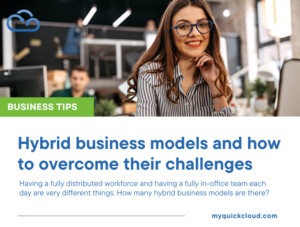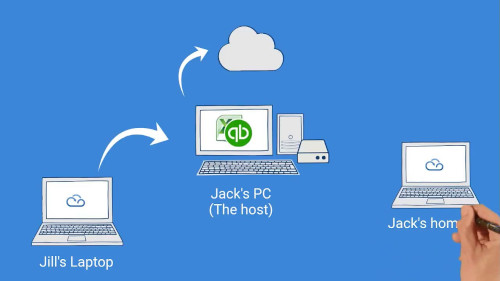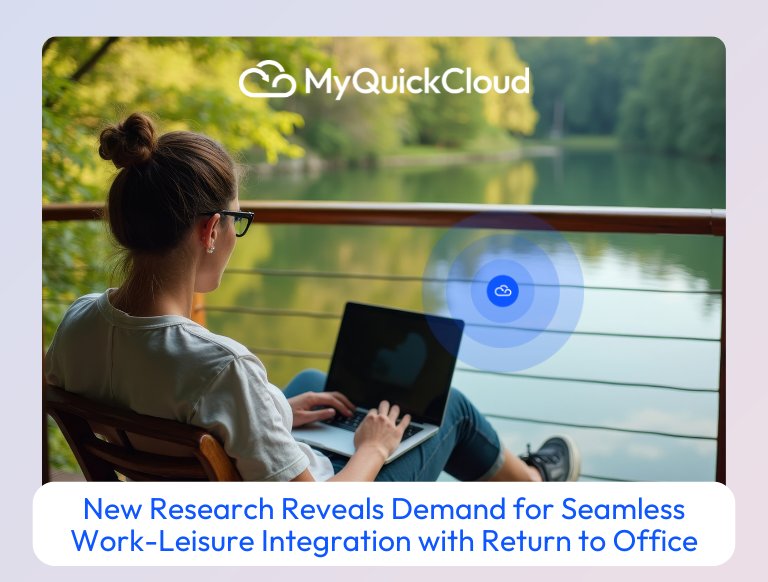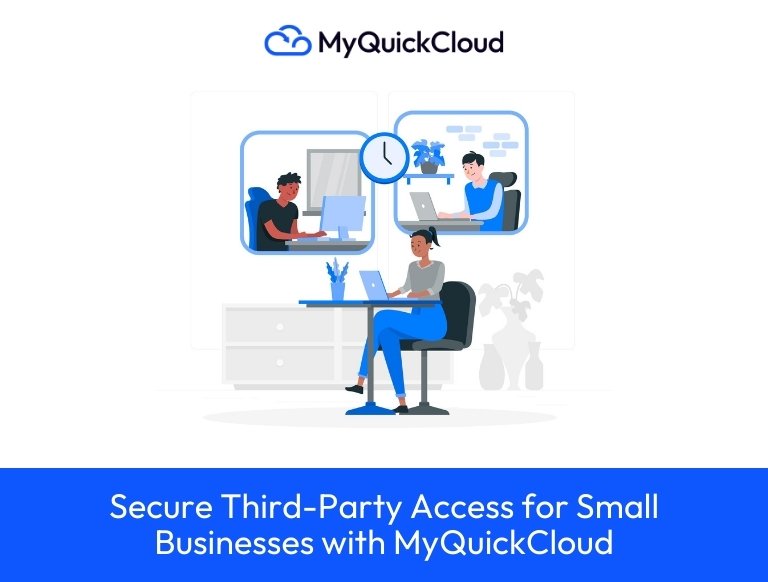The hybrid revolution is in full swing.
There are many ways to define that. Having a fully distributed workforce and having a fully in-office team each day are very different things. How many hybrid business models are there?
Expectations are also divided among team members. Most workers want to continue to have flexible remote work options, but over 65 percent want more in-person time with their colleagues.
There are two very different hybrid work models as you move in from the ends of the spectrum.
Make sure you know exactly which hybrid business model you plan to offer to your team when you reopen your office.
How does a hybrid business model work?
The hybrid business model combines in-person and remote work. It is possible to consider hybrid models in a variety of ways. HQ location, flexibility, how often workers must meet, and how physical space is utilized are the major differences.
Models of hybrid businesses: four types
1. An office-based position with limited flexibility
It is your physical office that serves as your headquarters. It is the source of all truth. There is always something going on at the office: meetings, discussions, training, announcements, etc. Collaboration, productivity measurement, leadership, and culture are all built in the physical office. Being in the office every day is crucial to your success.
In this model, a lot of digital tools are used, but real data is found in the expert knowledge of the team. In a meeting, the truth does not lie in the notes, but in the shared context from everyone.
It is expected in in this model that you will be plugged into the HQ every day. Some allowances are made for things like snow days, road trips, or caring for sick children. There are, however, exceptions to this rule. Taking care of work is your responsibility if you aren’t in the office.

2. An office-based position with a lot of flexibility
The physical office remains the true headquarters. There are still the same basic premises as in Model 1.
This hybrid business model allows people to work one or two days per week from home. It is possible for people to work independently on tasks that do not require immediate collaboration. If you need to focus on work for a long period of time and hammer out payroll updates, you can stay at home. Additionally, it gives commuters a break every week.
In Model 2, people get together when they need to communicate in-house. In hybrid business models like this, the central source of truth is often both digital tools and the office.
3. Office-based and digital
The technological core of your digital workplace is the central source of truth in Model 3. Collaboration, productivity, culture, and leadership are all powered by digital tools. The physical office has been decoupled from every major system.
For realignment in a hybrid digital model, teams use their strategy execution tools or switch to synchronous digital conversations.
Even in Model 3, the company still has a physical office, but it is not a core business function. In place of asking why people might want to work from home, it asks why they need to be together.
The physical space is used for the following purposes:
- People without a good set-up for working from home
- Meeting with clients and customers
- Collaboration meetings that benefit from the extra fidelity of in-person meetings
- A monthly catch-up meeting is one example of a regular gathering

4. No dedicated office, but digitally based
There is no permanent office for the Model 4 team. A physical headquarters is not needed because everyone is distributed. Digital technology is the central source of truth.
Physical space is rented by teams when needed. Company employees work from home or from co-working spaces paid for by the company. As little as once a year, the team might meet physically.
Thoughts to support your hybrid business model
Over time, it is likely that a shift from Model 1 to Model 2 will fail
Model 2 has the biggest problem of not requiring leaders to change their thinking. Extra flexibility is seen as generous, but if leaders cannot reach people right away, they will quickly become demotivated. For team members who want to grow, not being in the office is a liability. One day, leaders will make everyone return to the office every day.
The majority of leaders moving to Model 2 view it as a compromise. Although they want people in the office, they feel they need to offer more flexibility. Therefore, when things get tough, leaders will consider it their right to pull back on the ‘freedom’ they so kindly offered.
Most teams are not willing to create the clarity required by Model 2
Getting to a hybrid workplace successfully requires answering a lot of questions:
- Are all employees required to be at work on the same days?
- What are the hours you are expected to work and be available?
- How can you hold hybrid meetings if someone isn’t in the office on a given day?
- Is it possible to avoid creating a bias against people who are in the office every day?
In order for Model 2 to be successful, very detailed working agreements and a lot more clarity is required than what leaders are used to providing.
A remote versus a distributed environment
As a result of being away from HQ, team members in the first two hybrid work models should be called ‘remote’. It is correct to use the term ‘distributed’ in Models 3 and 4. The team is physically present in the HQ, but is not physically located there.
There is a huge difference between Model 2 and Model 3
Creating a remote work policy is not enough. Changing to Model 3 means a complete change of working style for your team. If you’re going to do this, make sure you’re willing to decouple each and every work system from the physical workspace.
Model 2 can create two classes of team members
Very quickly, you’ll have the every-day-office people, and the occasional office people. The gap between the two will grow ever wider unless you plan for it not to. People who are in the office every day must build an inclusive mindset to share additional context. However, they may see this as a burden and wonder why they need to work harder for other people who are getting “perks”. This road leads right back to Model 1.
There is no way to avoid losing people
Model 1 is really wanted by some people. They want to be at work. People will leave if you announce you are going to Model 3 or 4.
Those who have worked in Model 1 in the past won’t want to return. You will lose your employees if you announce you want them back at work.
This can’t be stopped. Choose the right people for your new hybrid business model.
The worst hybrid business model
This is the undefined one.
In the post-pandemic workplace, this is the greatest challenge. Leadership requires committing to a path and adjusting it as necessary. Choose the model that best suits your needs to embrace the digital era.





